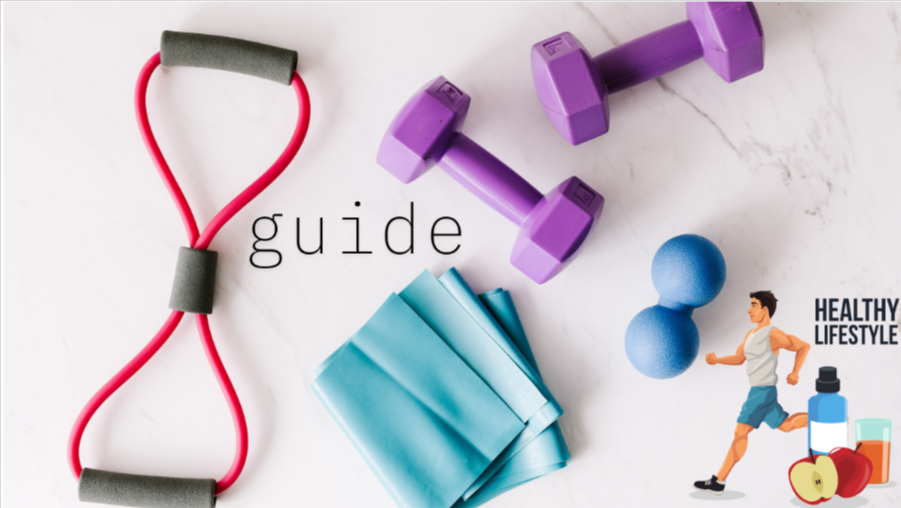Starting Your Fitness Journey: A Complete Guide for Beginners
Ready to get fit but don’t know where to start? This beginner’s guide to fitness will help you build healthy habits, stay motivated.
Let’s create a workout guide for those who are currently not in shape but want to begin their fitness journey. We’ll split it into two sections: Part 1 will focus on getting your mindset right and taking your first steps, while Part 2 will look into workout for an unfit person progressions and how to maintain fitness over time.
- Getting Started – Mindset and First Steps
- Understanding Where You Are
If you feel out of shape and are eager to start exercising, congratulations on taking this big first step! Many people feel nervous about starting, but everyone has to start somewhere.
Being “unfit” just means that your body isn’t used to regular physical activity. This might be because you lead a sedentary lifestyle, are recovering from illness or injury, or haven’t prioritized exercise before. Whatever your situation, it’s never too late to work on your fitness. A lot of professional athletes post their workout videos to encourage the general public to get used to physical activity. Recently, five-time national figure skating champion Valentina Marchei posted one. She has represented Italy at the Olympics, and you can watch the upcoming figure skating events of hers and other athletes on PinUp via their live streams of events.
Setting Realistic Expectations
People often quit exercising because they have unrealistic expectations. Your body needs time to adjust to new activities, and improvements can take time. Here are some things to consider:
– At first, you might feel uncomfortable or sore.
– Progress can seem slow in the initial weeks.
– Not every day will be the same; some will be tougher than others.
– Small, steady efforts lead to noticeable changes over time.
Starting with the Right Mindset
Before diving into exercises, let’s focus on developing a positive mindset:
- Consistency Matters: Walking for 15 minutes daily is better than doing intense workouts irregularly and needing lots of recovery time.
- Celebrate Small Wins: Pay attention when simple tasks, like climbing stairs, become easier.
- Be Patient and Kind: Your body is adjusting to new activities—respect this process instead of pushing too hard.
- Find Activities You Enjoy: Enjoyable activities are key to sticking with a fitness routine long-term.
- Initial Steps: Your First Two Weeks
For those who are out of shape, starting with basic activities can be very effective:
- Walking
– Begin with 10-15 minutes each day at a comfortable pace. Gradually extend the time before increasing the speed. Walking is low-impact and helps build cardiovascular fitness.
- Basic Mobility Exercises
– Spend 5-10 minutes daily on simple movements to improve flexibility:
– Gentle neck rotations
– Hip circles
– Ankle rotations
– Knee bends
- Foundational Strength Exercises
– Start with easier versions of these exercises, 2-3 times weekly:
– Wall push-ups: Do push-ups standing and leaning against a wall.
– Sit-to-stands: Get up from a chair using minimal or no hand support.
– Supported squats: Hold onto something stable while bending your knees.
– Heel raises: Lift your heels while gripping something for stability.
– Focus on doing 5-8 repetitions of each exercise with good form. Take breaks as needed.
Monitoring Your Effort
Use the “talk test” to guide you: You should be able to talk in full sentences while exercising. If you can’t, you’re pushing too hard. Aim for a moderate level of exertion, about 4-5 on a scale from 1-10.
Nutrition and Recovery Basics
Although detailed nutrition plans will come later, here are some basic tips:
– Stay hydrated by drinking water before, during, and after exercise.
– Eat a small snack with both carbs and protein within 30 minutes after exercising.
– Prioritize getting quality sleep, since your body repairs itself while you rest.
– Listen to your body – some soreness is normal, but stop if you feel pain.

Moving Forward – Exercise Routines and Long-Term Success
Now that you’ve started with walking, basic movements, and some strength exercises, let’s keep up the momentum. In this section, we will gradually introduce more organized workouts, offer more exercise choices, and help you establish a lasting fitness routine.
Improving Your Workouts
- Transitioning from Walking to Cardio Intervals
Once you’re able to walk for 20–30 minutes without excessive fatigue, you can incorporate easy intervals to enhance your heart health and calorie-burning.
How to Get Started:
– Begin with a 5-minute warm-up walk.
– Alternate between 1 minute of fast walking and 2 minutes of slower walking.
– Repeat for 15–20 minutes.
– Finish with a 5-minute cool-down walk and light stretching.
As you become more comfortable, reduce the break time or increase the duration of fast walking.
- Enhancing Strength Exercises
Strength training benefits not only muscles but also joints, posture, and metabolism. Continue with 2–3 sessions a week and increase the difficulty as you improve.
Advanced Strength Exercises:
– Incline push-ups (use a countertop instead of a wall)
– Bodyweight squats (without support as balance improves)
– Glute bridges (lie on your back, knees bent, and lift hips)
– Bird-dog (on hands and knees, extend opposite arm and leg)
Reps and Sets:
Aim for 2 sets of 8–12 repetitions, with a 30–60 second rest between exercises. Focus on slow, controlled movements and maintaining good form.
- Mini Circuits for Variety
Once comfortable with individual exercises, try combining 3–4 exercises into a short “circuit”, performing them in succession. For example:
Beginner Circuit Example:
– 10 bodyweight squats
– 8 incline push-ups
– 10 sit-to-stands
– March gently in place for 30 seconds
Repeat the circuit 2–3 times, with 1–2 minute breaks between rounds.
Creating a Weekly Routine
Here is a sample weekly plan to transition from basic movement to structured training:
Day | Activity
- Mon | Strength training + mobility exercises
- Tue | Fast walk with intervals
- Wed | Light movement (mobility/stretching) or rest
- Thu | Strength training
- Fri | 20–30 min walk or light biking
- Sat | Strength circuit or easy activity
- Sun | Rest or light stretching
Listen to your body. Rest days are crucial for your muscles to recover and get stronger.
Maintaining Momentum
Fitness is a journey, not a one-time event. The key to long-term success is consistency rather than intensity.
Tips for Staying Consistent:
– Schedule your workouts like appointments.
– Keep a record of what you do and how it makes you feel.
– To keep things interesting, try different activities like dancing, swimming, or a beginner yoga class.
– Find support through a workout buddy, an online community, or a fitness coach.
– Accept setbacks as part of the process. Missing a day or a week doesn’t mean you’re starting over. Just get back into it.
When to Move to the Next Level
As you gain strength and stamina, consider adding:
– Light jogging or biking
– Resistance bands or light weights
– Beginner-friendly group fitness classes
– Guidance from a personal trainer

Final Thoughts
Starting from scratch can feel challenging, but it offers a great opportunity. You’re building more than just physical strength—you’re developing confidence, resilience, and self-care habits that enhance every aspect of life.
Progress at your own pace. Respect your body. Keep showing up regularly.
You don’t need to go to extremes, just stay consistent. And consistent effort can change your life.














Post Comment